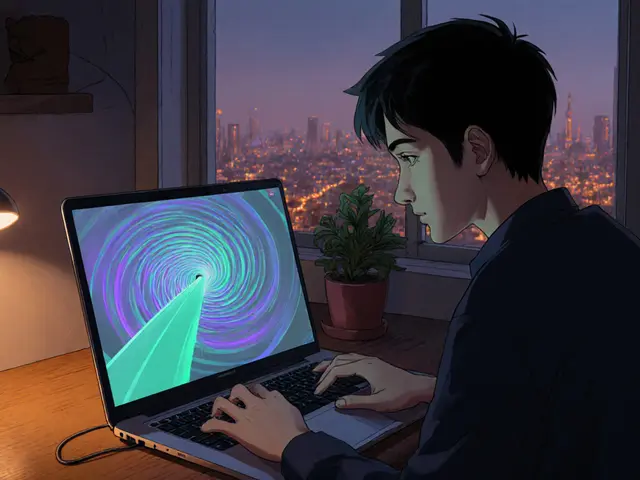Music DAO: Decentralized Beats and Community Power
When working with Music DAO, a decentralized autonomous organization that lets musicians, fans, and investors manage music projects through blockchain smart contracts. Also known as music decentralized autonomous organization, it bridges creative ownership and transparent finance.
A Decentralized Autonomous Organization, a member‑run entity where rules are encoded in code instead of a boardroom provides the legal backbone for a music DAO. By combining NFT, non‑fungible tokens that certify a unique piece of music or collectible with smart contracts, creators can tokenize songs, royalties, and concert tickets. The tokenomics, the economic design that defines token supply, distribution, and reward mechanisms decides how revenue flows back to artists and fans. Finally, community governance, the process where token holders vote on proposals, fund allocations, and strategic direction turns listeners into stakeholders.
Why Music DAO Matters for Creators and Listeners
Music DAO enables artists to monetize directly without a middleman, so every stream or sale can be traced on‑chain. That transparency cuts out hidden fees and gives fans proof of ownership. Because the DAO’s code enforces royalty splits automatically, disputes over who gets paid shrink dramatically. At the same time, fans who hold the DAO’s governance token can propose new projects, vote on album budgets, or crowdfund a tour. This creates a feedback loop where the most engaged listeners shape the next release.
Tokenomics plays a crucial role: a well‑designed token model rewards early supporters with higher voting power while protecting against inflation. For example, a fixed‑supply token might allocate 30% to the artist, 40% to the community pool, and 30% to a reserve for future collaborations. Such structures align incentives, so the DAO’s health improves as more tracks are released and streamed.
NFTs add another layer of value. An artist can drop a limited‑edition album NFT that grants the holder backstage access, exclusive merch, or a share of future streaming revenue. Because each NFT is unique, collectors can trade these rights on secondary markets, creating a new revenue stream for both the artist and the DAO treasury. In practice, the NFT’s smart contract can automatically redirect a percentage of resale profits back into the community fund.
Community governance ensures that decisions aren’t made by a single label exec. Proposals are submitted as on‑chain messages, then voted on using the DAO’s token. If a proposal reaches the required quorum, funds are released automatically to the chosen address. This process reduces bureaucracy and speeds up execution—artists can fund a music video in days instead of weeks.
If you’re curious about how a music DAO can reshape your next release, keep reading. Below you’ll find deep dives into VPN use in crypto trading, exchange reviews, token analyses, and more—all curated for anyone interested in the intersection of blockchain and creative industries. The collection gives you practical tips, risk warnings, and real‑world examples that illustrate how these concepts work together in today’s market.
Explore the posts to see how the ideas‑of‑decentralization, NFTs, tokenomics, and community voting—play out across different platforms and use cases. Whether you’re an artist, a fan, or a developer, the insights will help you decide whether to join an existing music DAO or launch your own.
27
Music NFTs: Boosting Direct Fan Engagement for Artists
Explore how music NFTs let artists sell unique digital assets, earn higher revenue, and create exclusive fan experiences through platforms, royalties, and DAO governance.
Latest Posts
Popular Posts
-
 What is Bitgert (BRISE) crypto coin? Full breakdown of the blockchain, tokenomics, and real-world performance
What is Bitgert (BRISE) crypto coin? Full breakdown of the blockchain, tokenomics, and real-world performance
-
 What Is Collateralization in DeFi? A Clear Guide to How It Works and Why It Matters
What Is Collateralization in DeFi? A Clear Guide to How It Works and Why It Matters
-
 What is LUXO (LUXO) crypto coin? The truth about the luxury authentication token
What is LUXO (LUXO) crypto coin? The truth about the luxury authentication token
-
 Xena Exchange Crypto Exchange Review: Professional Tools vs. Regulatory Risks
Xena Exchange Crypto Exchange Review: Professional Tools vs. Regulatory Risks
-
 What is Privix New (PRIVIX) Crypto Coin? Facts, Price, and Risks in 2025
What is Privix New (PRIVIX) Crypto Coin? Facts, Price, and Risks in 2025
Tags
- crypto exchange
- cryptocurrency
- crypto exchange review
- meme cryptocurrency
- blockchain
- cryptocurrency compliance
- Binance Smart Chain
- CoinMarketCap airdrop
- underground crypto Nepal
- crypto airdrop guide
- crypto staking
- Bitcoin mining Iran
- airdrop
- Ethereum staking
- GENIUS Act
- liquid staking
- cryptocurrency exchange security
- crypto
- crypto airdrop
- crypto regulations


